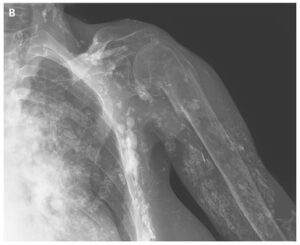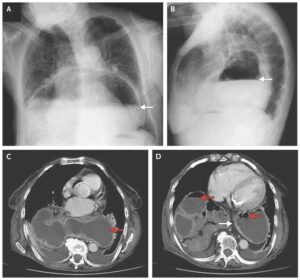This article is an answer to the Case – Patient with Reticular Hyperpigmentation on the Leg
This patient’s history and clinical findings are consistent with erythema ab igne, also referred to as fire stains or toasted skin syndrome.
It is characterized by localized areas of reticulated erythema and hyperpigmentation due to chronic exposure to heat below the threshold of a thermal burn.
Initially, the macular colour changes are transient and easily blanchable. As heat exposure continues over time, it leads to dusky hyperpigmentation that leads to fixed colour changes that are no longer blanchable. Later lesions of erythema ab igne can demonstrate epidermal atrophy, appear keratotic or lead to bullae formation.
Although, the exact pathophysiology is unknown, repeated exposure to heat below 45°C (113°F) results in a reticulated erythema in a pattern that corresponds with the dermal venous plexus.
Common heat sources reported to cause erythema ab igne include heating pads, hot water bottles, heating blankets, heated car seats, heated reclining chairs and laptops/computers (often affecting the anterior thighs). Additional causes include open fires, coal stoves, steam radiators and electric stoves/heaters.
Due to the presence of epidermal atypia, which is comparable to that of actinic keratoses, the possible development of cutaneous squamous cell carcinoma or Merkel cell carcinoma is a major long-term concern associated with erythema ab igne. There are anecdotal reports of treating the area with topical 5-fluorouracil.
SIMILAR CASE: Mottled Darkening of the Skin on the Left Thigh


